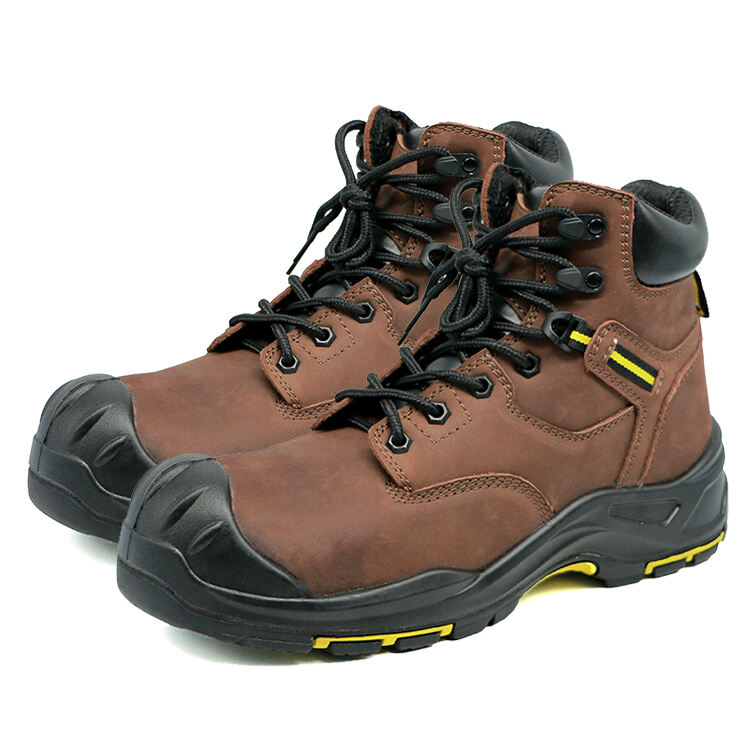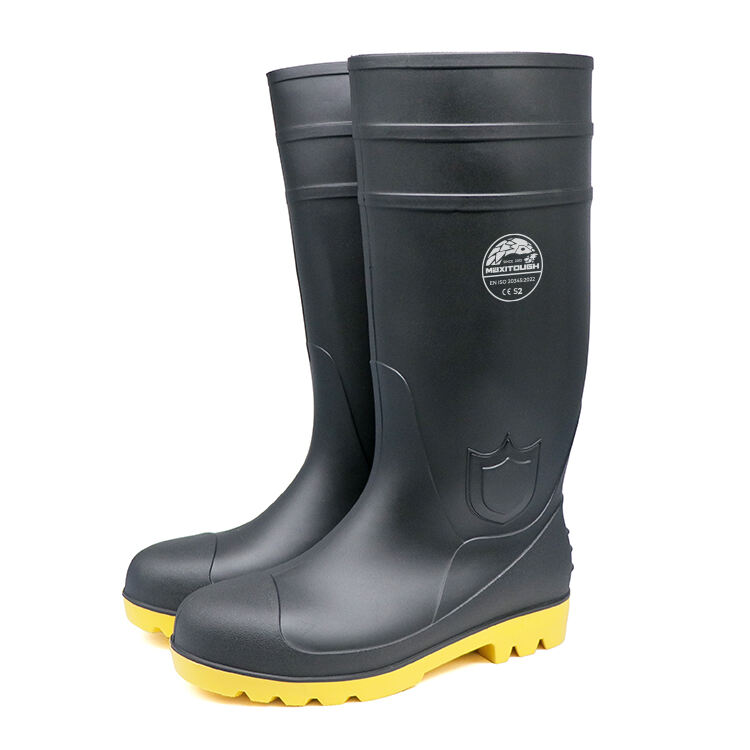
Anti-Static Safety Shoes: Essential for Electronics Manufacturing Safety
The Role of Anti-Static Safety Shoes in Electronics Manufacturing
Preventing Electrostatic Discharge (ESD) Damage
Preventing electrostatic discharge (ESD) in sensitive electronics manufacturing is crucial because ESD can cause significant damage, resulting in costly repairs or replacements. ESD occurs when a static electric charge builds up on a person's body and is discharged through contact with electronic components, potentially leading to malfunctions or permanent damage to delicate circuitry. According to a study, the U.S. electronics industry suffers losses of over $5 billion annually due to ESD-related damages, underscoring the critical need for effective preventive measures.
Anti-static safety shoes are specifically engineered to dissipate static electricity, and they play a pivotal role in mitigating ESD risks. These shoes are crafted using materials such as carbon fibers and conductive soles that effectively transfer static charges away from the body and safely into the ground. By wearing anti-static shoes, workers in electronics manufacturing can safeguard sensitive components, ensuring uninterrupted production and reducing the likelihood of costly downtimes.
Compliance with ANSI/ESD S20.20 Standards
Compliance with ANSI/ESD S20.20 standards is vital in the electronics manufacturing industry, as it helps companies mitigate ESD risks and enhance the safety of their operations. These standards define the requirements for an ESD control program, ensuring that manufacturers have the proper protocols to prevent static electricity damage. By adhering to these standards, companies can significantly improve workplace safety and avoid potential financial losses from damaged products.
Anti-static safety shoes are instrumental in achieving compliance with these standards. They are designed to meet specific electrical resistance levels, ensuring that the footwear performs reliably in dissipating static charges. By using shoes that comply with regulatory criteria, companies can demonstrate their commitment to safety and quality. Expert opinions suggest that compliance not only enhances safety but also minimizes product loss, which ultimately contributes to sustained industrial productivity and customer satisfaction.
How Anti-Static Footwear Protects Workers and Equipment
Conductive Materials and Grounding Mechanisms
Anti-static safety shoes are integral to preventing static electricity accumulation that can lead to dangerous electrostatic discharge (ESD). These shoes typically feature conductive materials such as carbon filaments and innovative polymers which facilitate grounding. By dispersing static electricity through these materials and grounding mechanisms, footwear ensures protection against ESD. The grounding not only protects sensitive electronic equipment but also safeguards workers in ESD-prone environments. Studies reveal the effectiveness of footwear grounding mechanisms, citing significant reductions in ESD incidents within manufacturing sectors that employ such footwear.
Dissipating Static Buildup During Movement
The ability of anti-static footwear to dissipate static buildup during movement is crucial in maintaining continuous protection in dynamic work environments. These shoes use specially designed dielectric materials that discharge static electricity safely, ensuring that workers and equipment are constantly shielded. The emphasis on comfort alongside protection is paramount, with the dielectric materials enhancing safety without compromising the ergonomic aspects of the footwear. Improved workplace safety statistics highlight the efficacy of anti-static shoes, reporting enhanced safety records and reduced incidents of ESD-related damages in facilities using these innovative designs. By prioritizing dynamic safety through dielectric material applications, manufacturers significantly contribute to workplace security and efficiency.
Key Features of Effective Anti-Static Safety Shoes
Electrical Resistance Ratings (10^6 to 10^9 Ohms)
Electrical resistance ratings are crucial in ensuring the effectiveness of anti-static safety shoes. The acceptable resistance range of 10^6 to 10^9 ohms is designed to prevent electrostatic discharge (ESD) by allowing a controlled flow of electrical charges from the body to the ground. This resistance range is optimized for different industrial environments, providing enough conductivity to discharge static electricity without creating risk. Various resistance levels cater to specific operational needs across industries such as electronics manufacturing and telecommunications. Certified testing methods, including EN ISO 20345 and ASTM F2413, are used to evaluate footwear for ESD protection, helping organizations choose the right shoes according to their specific requirements.
Non-Slip Outsoles for Hazardous Floors
Non-slip outsoles are essential in anti-static safety shoes, particularly in environments prone to wet and slippery conditions. Such conditions can lead to workplace injuries due to slips and falls. The shoe designs incorporate advanced traction technologies with slip-resistant materials like rubber or polyurethane to enhance grip and prevent accidents. Studies have shown that slips, trips, and falls account for a significant percentage of workplace injuries. In 2020, the U.S. Bureau of Labor Statistics reported that these accidents were responsible for over 700,000 nonfatal workplace injuries annually, making non-slip features indispensable for ensuring worker safety.
Waterproof Options for Wet Environments
Waterproof anti-static safety shoes serve a vital purpose in environments where water exposure can lead to electrical hazards. These shoes use specialized materials such as treated leather and waterproof membranes that prevent moisture penetration while maintaining breathability. Such technology ensures that shoes remain comfortable during long working hours. Industries like construction, food processing, and chemical manufacturing often demand waterproof footwear to ensure worker safety. By incorporating moisture protection without compromising on anti-static properties, these shoes protect both workers and sensitive equipment from water-induced electrical risks.
Lightweight Designs for Extended Wear
Lightweight designs in anti-static safety shoes offer significant advantages for professionals working long shifts. Reduced weight minimizes leg and foot fatigue, enhancing comfort and overall productivity. These shoes often include ergonomic features such as cushioned insoles and arch support that improve comfort and reduce fatigue. Workers frequently praise these shoes in surveys and testimonials for their comfort and support during extended periods of wear. Lightweight safety shoes not only enhance wearer comfort but also contribute to a safer, more efficient working environment by allowing workers to focus on tasks without being burdened by cumbersome footwear.
Anti-Static vs. Other Safety Footwear: Critical Differences
Anti-Static vs. Insulating Shoes: Use Cases
Understanding the differences between anti-static shoes and insulating footwear is crucial for selecting the right safety gear for various industries. Anti-static shoes are designed to reduce static electricity buildup, releasing it safely to the ground, which is essential in environments like electronics manufacturing or fuel-sensitive areas. In contrast, insulating footwear serves a very different purpose. These shoes protect against electrical shock by preventing electrical currents from passing through the body. Both designs address specific workplace hazards, and the choice between them should be guided by the safety standards applicable to the work environment. Industry experts often recommend consulting guidelines from organizations like the Occupational Safety and Health Administration (OSHA) or International Electrotechnical Commission (IEC) when selecting the appropriate safety footwear for your needs.
When Steel Toe Work Boots Are Necessary
Steel toe work boots are indispensable in environments where heavy machinery is used or there is a risk of falling objects. These boots, with their durable steel caps, provide an essential layer of protection for workers' feet against impacts, crushing, and punctures. The importance of steel toe boots becomes sharply evident in accident-prone industries like construction, warehousing, and transportation. Modern designs have ingeniously integrated both steel toe and anti-static properties in certain footwear models, offering comprehensive protection suited for multifaceted safety requirements. The dual protection ensures workers are shielded from both physical and electrical hazards, promoting an all-encompassing approach to workplace safety that adheres to stringent safety standards.
Proper Cleaning and Maintenance Protocols
To ensure the long-term performance and safety of anti-static safety shoes, adhering to proper cleaning and maintenance protocols is crucial. Regular cleaning prevents contamination that can compromise the shoe's anti-static properties and reduce their effectiveness in protecting workers and sensitive equipment. Dirt and other contaminants can accumulate, hindering the shoe's ability to dissipate static electricity efficiently. Therefore, maintaining cleanliness significantly contributes to extending the lifespan of the footwear and maintaining its protective qualities.
-
Recommended Cleaning Protocols:
- Daily Cleaning: Use a damp cloth to wipe off any visible dirt or grime from the shoe’s exterior.
- Weekly Deep Cleaning: Prepare a mild soap solution and gently scrub the shoes with a soft brush, ensuring the use of non-corrosive cleaning agents to avoid damaging the materials.
- Inspection for Wear: Regularly check for any signs of wear and tear, such as cracks or damage on the sole or body of the shoe, which could impair its protective function.
- Drying: Always air-dry the shoes at room temperature to prevent material degradation.
Industry experts suggest examining the shoes periodically and following manufacturer guidelines to ensure optimal performance. Recommended maintenance frequencies may vary based on usage and environmental conditions, but maintaining a regular cleaning schedule is vital for effective long-term usage.
Regular Electrical Resistance Testing
Conducting regular electrical resistance tests is an essential practice for confirming the ongoing compliance of anti-static safety shoes with safety standards. These tests ensure that the footwear maintains its ability to dissipate static electricity effectively, thereby safeguarding both the wearer and the equipment in sensitive environments. By neglecting these checks, the risk of failure increases, potentially leading to unsafe conditions.
To perform resistance testing, the following procedure is advised:
- Equipment: Use an electrical resistance tester specifically designed for footwear.
- Testing Procedure: Ensure shoes are clean and dry before testing. Connect the shoe to the tester and record the resistance value, which should align with the prescribed range for anti-static footwear.
- Frequency: Perform these tests regularly, especially if the shoes are subjected to rigorous use in demanding industrial settings.
Statistics show that footwear failure rates can decrease significantly with proper testing protocols, reducing workplace accidents related to static discharge. Implementing regular resistance tests not only maintains compliance but also enhances overall footwear safety in critical work environments.

 EN
EN
 AR
AR BG
BG HR
HR CS
CS DA
DA NL
NL FI
FI FR
FR DE
DE EL
EL HI
HI IT
IT JA
JA KO
KO NO
NO PL
PL RO
RO RU
RU ES
ES SV
SV TL
TL ID
ID SR
SR VI
VI HU
HU MT
MT TH
TH TR
TR AF
AF MS
MS GA
GA BN
BN NE
NE
